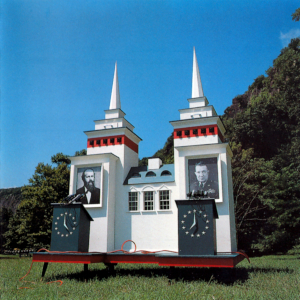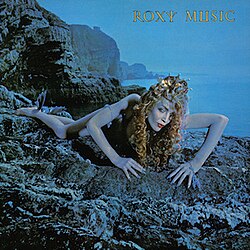Lots of kids pick up a musical instrument because they heard John Coltrane, Aretha Franklin, or Stevie Ray Vaughn and thought, “That’s cool. I want to do that.” Those kids must’ve also seen the “Be Like Mike” Gatorade commercials and figured they could be like Michael Jordan.
I knew the only thing I had in common with his Airness was that we could both drink salty sugar water, and the only thing I could do like Coltrane was make my saxophone sound like an elephant in musth – although he seemed to do it intentionally, and I did it because I was trying to play an A.
However, I could play, “Louie Louie.”
“Louie Louie” is a famous mess. The Kingsmen recorded their version of Richard Berry’s three chord, two-minute song into a single overhead microphone at Northwestern Inc studio in Portland, Oregon on April 6, 1963. Jack Ely, straining on his tip-toes and singing through braces, yells the entire thing and nearly blows the third verse by coming in early after a nasty, nearly atonal guitar solo. After the song raced up the charts, the FBI and FCC weighed in on whether or not the lyrics were indecent, before declaring them incomprehensible. (Supposedly, the drummer botches a fill at 0:54 and yells “Fuck!” but I’ve never really heard it.)
“Louie Louie” has an energy, chaos, and charming ineptitude that didn’t really exist in music before it. Sure, the 1950s had high-energy performers like Bo Diddley, Chuck Berry, and Buddy Holly. It had wild men like Little Richard and Jerry Lee Lewis. And it had Link Wray, whose instrumentals’ pioneering use of distortion and power chords laid the foundation of noisy guitar rock for the next decade. But none of those gods played with the joyous, sloppy amateurism of The Kingsmen. “Louie Louie” seems like a wild party, but one that comes with a pretty rough hangover.
The group reportedly hated how the track turned out, but their manager thought it was great. So did the record-buying public, who sent it to #2 on the Billboard Top 100 chart. So did thousands of teenagers first across the Pacific Northwest, and then California, and then the rest of America, who would, over the next five years, start their own bands in their parents’ garages, imagining, “If they can do it, why can’t we?” Thus began the heyday of garage rock.
When you see Charles Mingus’s band, dressed in their Sunday best, tearing into a post-bop group improvisation or James Brown ripping his internal organs out during “Lost Someone,” you’re watching aliens. Theoretically, they’re doing the same thing as your average musician, but they’re doing it at such a high level, it might as well be a different activity. Sure, I can play a decent game of HORSE, but I can’t slam dunk from the free throw line.
Garage rock collapses the distance between audience and performer. Playing for 180,000 people in Maracanã Stadium, like Paul McCartney, Tina Turner, and Frank Sinatra did is a pipe dream your average strummer shouldn’t even indulge. You might as well be playing for Napoleon’s Grande Armée on the surface of the moon. But playing to a hundred people in a packed bar, VA hall, or church basement, some of whom might want to get you drunk or let you touch their private places…that’s doable.
By some estimates, hundreds of thousands of bands sprang up in the 1960s in the wake of “Louie Louie.” Most of them never recorded music, and of those who did, most of it probably isn’t worth remembering. But a handful of singles stand up to anything recorded by their peers and inspirations in The Rolling Stones, The Beatles, The Who, The Kinks, The Animals, and The Yardbirds.
In 1972, after the garage rock boom had subsided, future Patti Smith Group guitarist Lenny Kaye convinced Elektra Records to release a double album compilation of his favorite lost tracks. They called it Nuggets.
Nuggets proved that the tired combination of drums, bass, guitar (and sometimes keyboard, tambourine, and harmonica), aided by fuzz boxes, tremolo, reverb, and the occasional production gimmick, compressed through the id of a horny, angry, fun-loving, or broken-hearted teenage (or recently teenage) boy – and they were mostly, but not always, boys – could be rock & roll nirvana.
Of Nuggets twenty-seven tracks, some feature future rock stars (Todd Rungren, Ted Nugent, and Mountain’s Leslie West appear in their embryonic bands), and some would become cult classics (The 13th Floor Elevators locked down their place in rock & roll’s Valhalla when John Cusack’s record store owner put “You’re Gonna Miss Me” on after his girlfriend left him in High Fidelity). But, for the most part, the people who made Nuggets went on to live lives outside of music, and this was their chance at immortality.
And they would inspire millions to do the same. Along with the work of The Velvet Underground and The Stooges, Nuggets was a favorite record of the first wave of punk rockers (which included Kaye). In the same spirit of garage bands of the 1960s, punk rock inspired kids of the 1970s and ‘80s to pick up instruments, make friends, and play music…even if they didn’t end up making music that sounded exactly like their garage rock forebears. The Pop Group’s “She is Beyond Good and Evil” might sound like the title of a ‘60s garage ripper, but even the ‘60s most outré groups (like The Monks) might consider it “weird.”
But even if the kids went from playing garage rock to punk to hardcore to grunge to punk (again) to nu metal and back to garage rock, garage rock itself never really disappeared. In the mid-1980s, after punk turned into post-punk, which turned into new romantic, bands like Lyres and The New Chesterfield Kings began reviving the sounds of “psychedelic ‘60s.” In the 1990, bands like The Dirtbombs and The Mummies fused garage rock with punk. And in the 2000s, The White Stripes rode that sound to the top of the world. “Fell in Love with a Girl” could’ve come out in 1966 and it would’ve been a big hit.
Ironically “Louie Louie” didn’t appear on a Nuggets compilation until Rhino reissued the original album as a box set in 1998 with 92 additional tracks, which include monster hits like “Incense and Peppermints” and “Wooly Bully,” alongside tracks from garage rock royalty like The Sonics, The Music Machine, and Chocolate Watchband, and uncharted stuff that doesn’t even have Wikipedia pages, like GONN’s rocking “Black Out of Gretley.” All are essential.
Just as you don’t need to be Michael Jordan to pick up a basketball, you don’t need to be Eric Clapton to pick up a guitar. Just do it.






